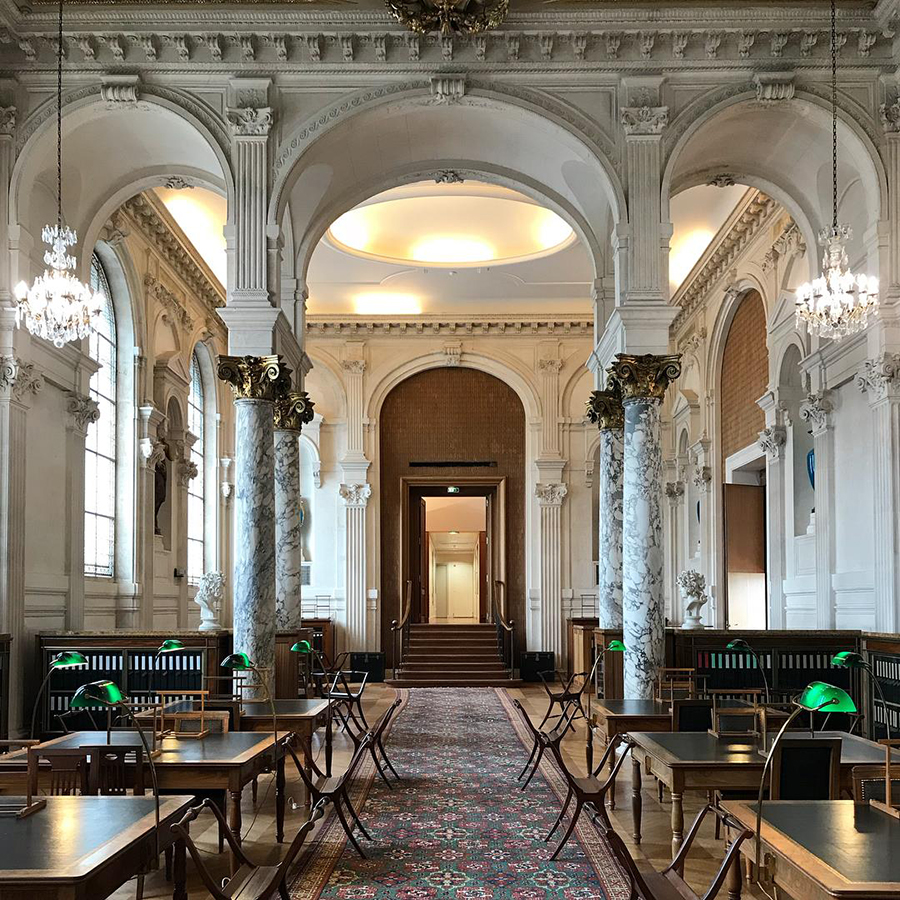In Josephine’s garden, in search of black swans

French Connections
Australian Print Workshop
Paris study tour
May – June 2018
French Connections, part 3
French Connections, part 1
French Connections, part 2
French Connections, part 4
French Connections, part 5
French Connections, part 6
French Connections, part 7
(Post) French Connections, part 1
(Post) French Connections, part 2
(Post) French Connections, part 3
(Post) French Connections, part 4
24th May:
Whether before Josephine’s le cygne noir at Malmaison or in the reading room at the Louvre, one crouches for a closer look, iPhone or magnifying lens in hand, and listens to the floorboards creak as one pads across the room, presence detected.
* * *
In 2009, I made an artists’ book, At the Château de la Malmaison tigers roam, featuring Josephine’s Malmaison, and in 2018, I walked through the very rooms I had placed a cheetah in the antechamber and a wallaby in the wardrobe of the emperor. It has been a very nice loop.
“Josephine’s garden at Malmaison included many species of animals collected from Baudin’s voyages, including kangaroos, emus and black swans. The first kangaroo arrived in 1804, only one of three on board Le Géographe to survive. Others were donated to Josephine over time, but they did not respond well to the European climate and at the time of Josephine’s death at Malmaison in 1814, only one remained alive. The black swans, however, not only survived but thrived, roaming the gardens freely.”
— Napoleon: Revolution to Empire, ‘Malmaison: Josephine’s Garden’, NGV, 2012
* * *
Pierre-Joseph Redouté died aged eighty-one while painting a lily, and we wouldn’t be the first to call this a fitting finale.
(In the reading room of the Louvre, with a magnifying glass.)
24th May (continued):
While cleaning my teeth and thinking about Delacroix and how he captured so brilliantly the twisting, rippling, caught-in-a-spring, in between movements of big cats and horses, I spy a black cat on the windowsill, quietly watching my own bathroom activities. I spit out the paste into the sink, look back out the window, and the cat is gone. A pause before a transition, in painting and in life.
25th May:
Inside the Muséum national d’Histoire naturelle, a platypus tickles the belly of their companion, making them curl into a furred letter ‘c’. In a cabinet nearby, a lynx holds court, and sports the look of someone in on the joke. Elsewhere, a wolf attempts to extinguish a light with a quick snap-close, a thylacine looks sheepish, and inside of a dog it may be too dark to read, but if you’re eagle-eyed you’ll spot Louise.
25th May (continued):
Originally “made up of books from the King’s Cabinet as well as duplicates from the national library and items confiscated during the French Revolution”, in one of the Muséum national d’Histoire naturelle’s many library spaces, we turn the pages of the books left on the table as if in wait of a reader before making our own selection. In such a reading room, like the Louvre before it, surely there is a little transference of knowledge through proximity alone.
* * *
Standing before a photograph of a black cat basking on the tiles (Kardas, 1898–1978, Untitled [cat], c. 1925–30). Across their back, the shadow of a window falls like a cross. It is like the black cross of Kasimir Malévitch (1878–1935), hanging on the wall opposite. “Generating a certain dynamic .... of uncertain edges”, in the Pompidou. In the collections moderne, room after room, you, me, and “a slight tilt and the precarious equilibrium” of all things. We’ve only just scratched the surface.
* * *
The beautiful task of gathering ideas, whether gathered inside or outside, past or present, scheduled or chanced upon, directly or indirectly related, from which to later sift through or see what settles.
(Related: a series of five artists' books from five different cities, created for and exhibited as part of A key to help make your own world visible, Craft Victoria, 2009)
Image credit: Angelo Garbizza, Vue du Château de la Malmaison en 1807































































